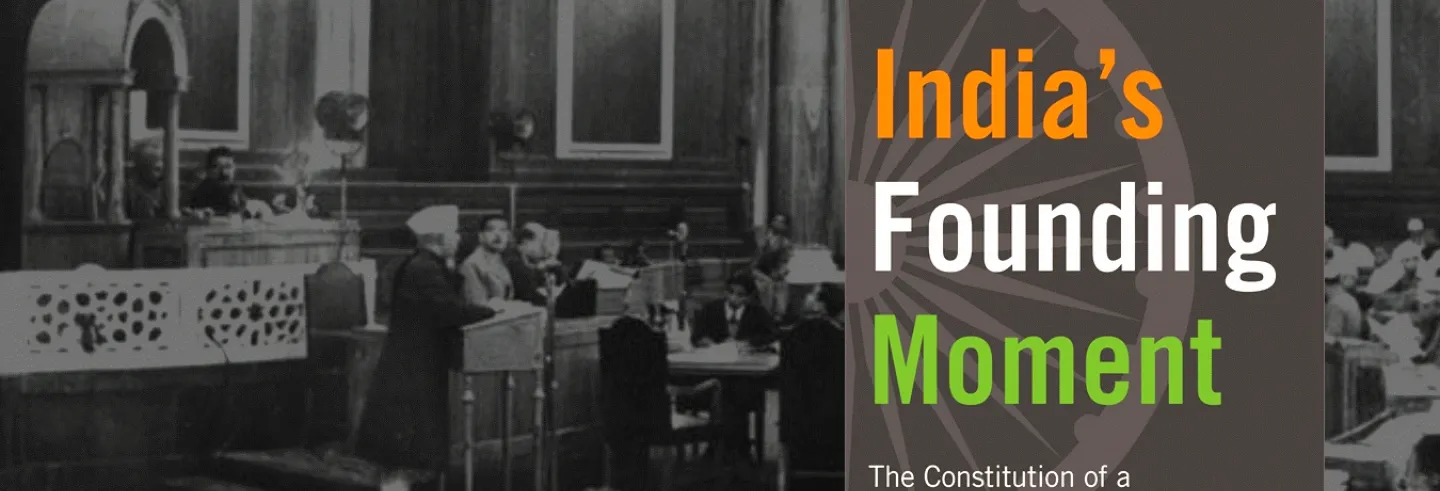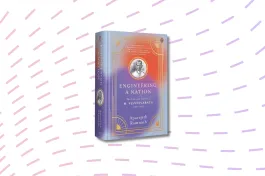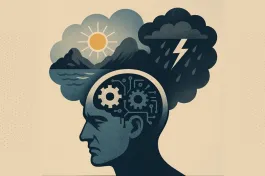A few months after the anti-Citizenship Amendment Act and human rights activists demonstrated with a copy of the Constitution of India in their hands, it is important to return to the making of the text that Madhav Khosla calls “India’s founding moment”. The book cites the 1946-1949 Constituent Assembly debates at length in order to answer one question: how did the founding fathers of the world’s largest democracy “approach[ed] the missing foundations on which self-government was widely thought to be predicated?” (p. 3).
In other words, how did the builders of this liberal regime make up for the absence of liberal traditions in society?
Each chapter of India’s Founding Moment analyzes one facet of their response to this challenge. First, the Constitution codified the rights of the citizens in great detail: it was “conceptualized as a pedagogical tool […], aspiring to nothing short of building a new civic culture” (p. 22). Khosla, here, suggests that a new man was supposed to emerge from this “founding moment”:
Through codification, the actions of Indians could be structured by specific forms of knowledge. The constitutional text would allow them to deliberate and exercise authority in ways that were suitable to a free society with a shared consensus over the principles of self-government. Codification would, in other words, make Indians democrats”. (p. 43).
This first step was nothing less than a revolution.
The second step was more implementation-oriented: to promote the emancipation of the new Indian citizen, the state had to be strong, and, therefore, the Constitution of India in spite of its federal character, centralized power. Such a concentration of authority was seen by key figures like Ambedkar and Nehru as the best way to modernize society from above in economic and anthropological terms, via five years plans as well as societal reforms. Khosla points out very pertinently that these two men “shared an understanding of power that went beyond formal, legal conceptions and entailed a deeper sociology” (p. 97). They were the avant-garde of the revolution.
[T]he abolition of separate electorates and strengthening of quotas were both intended to promote democracy.
The third dimension of the constitutional project that took shape after India’s Independence pertained to representation: “to unchain imposed group identities and liberate the individual” (p. 142). A separate electorate for religious minorities was abolished and – Khosla argues paradoxically – reservations for Dalits and Adivasis made more systematic. There is no contradiction here if one admits that positive discrimination was not a way to recognize the group identities of Dalits and Adivasis, but a device to redress past oppression. In that sense, the abolition of separate electorates and strengthening of quotas were both intended to promote democracy.
Khosla’s thesis is so convincingly argued that one gets immersed in nostalgia, reading about the initial plan, what he calls the “universalism of India’s founding moment” (p. 155). What went wrong? Why, 70 years later, has universalism been submerged by ethnic nationalism and why has the emancipatory power of the Constitution of India plateaued? Khosla does not give any explicit reason but suggests that the worm was in the fruit to some extent.
For him,
“Nehru’s and Gandhi’s rejection of communal politics and an identity-based framework for representation was not articulated alongside any positive theory. The rejection emerged from denial rather than engagement […] By denying Hindu-Muslim tension, Nehru was rejecting communal dissonance among India’s masses” (p. 120).
In contrast, according to Khosla, “one intellectual tradition that acknowledged Hindu-Muslim difference and expressed some version of universalism was Hindu nationalism” (p. 125).
I beg to differ on several grounds. First, Gandhi’s and Nehru’s Indian nationalism was definitely based on a positive identity, that of the Indian civilization whose history they knew very well, as evident from Nehru’s Glimpses of World History (a book Khosla does not cite). This civilization had its culture, its language (the Hindustani to which Gandhi was so much attached), its cults (born from interactions between yogis and Sufi saints), its music, its cuisine, its healing techniques. It was a “composite culture” (the phrase was to be promoted by Nehru in the 1940s 1 On this key notion of the 1940s-50s, see Jaffrelot (2004). but Khosla does not mention it) that was the crucible of secularism and that the Hindu nationalists failed to acknowledge. By the way, the words “secular” and “secularism” too are curiously missing in Madhav Khosla’s book.
Nehru acknowledged the importance of religion in society and did not define secularism as irreligious or anti-religious.
Second, the “Indian masses” were the last to break with this brand of multiculturalism – as evident from the social profile of the Dargah goers today. Communalism was, indeed, invented by elite groups in competition for power as historians and political scientists have shown. Certainly, they have instrumentalized religion to mobilize supporters – Jinnah’s use of Islam is a case in point. But they have not “acknowledged Hindu-Muslim difference”, they have exacerbated it and even “constructed” it to paraphrase the title of a 1990 book by Gyan Pandey. In fact, in the academic world, the fate of the primordialist approach of identity politics which assumes that Hindus and Muslims have always formed two nations had been sealed many years ago 2 Those who are interested in this phase of the Indian historiography can go back to the Brass/Robinson debate that Francis Robinson has elegantly summarised in his Foreword to R. Kaur (ed.) 2005. . As Khosla writes, Nehru might have had a simplistic approach to communalism when he expected that socio-economic considerations would eventually prevail over this “ism”, but he was right when he said that this ideology had little to do with religion. Incidentally, Nehru acknowledged the importance of religion in society and did not define secularism as irreligious or anti-religious.
Third, the version of universalism that Hindu nationalism expresses is qualified by Khosla himself when he highlights the racial dimension of the Hindutva project: while Savarkar claims that he wanted to abolish caste, he harked back to blood as the main identity marker—in a not so inclusive definition of citizenship.
If the universalistic dimension of the Indian Constitution is challenged by Hindu nationalism today, its reformist and emancipatory power is also under attack for reasons one could detect at the time of the Constituent Assembly debates. But these are not mentioned by Khosla, probably because he tends to assume that those who were sitting in this assembly formed an epistemic community. They are repeatedly referred to as “India’s founders” or even “the nation’s founders”.
There was no consensus about the emancipatory power of the abolition of separate electorates and the promotion of reservations.
In fact, they formed a very divided lot, in particular on the representation issue that Khosla analyses in his third chapter, “Identity and Representation”, from the point of view of individual emancipation. There was no consensus about the emancipatory power of the abolition of separate electorates and the promotion of reservations. Muslim members of the Constituent Assembly tried to defend their separate electorate but Vallabhbhai Patel, the strong man of the Minority Committee—who is largely absent from the book—told them:
Those who want that kind of thing have a place in Pakistan, not here (Applause). Here, we are building a nation and we are laying the foundations of One Nation, and those who choose to divide again and sow the seeds of disruption will have no place, no quarter, here, and I must say that plainly enough (Hear, Hear). (Debates 1989, Vol V, p 271)
Similarly, Ambedkar had to fight with Patel and he lost that bitter battle. On 28 August 1947, one of his lieutenants, Nagappa, proposed an amendment stipulating that in the constituencies reserved for the Scheduled Castes, only the candidates who obtained at least 35% of the SC votes could be returned, to avoid the presence in the assemblies of Dalit representatives mainly elected by the upper castes—as established by the Poona pact.
Patel dismissed this amendment, saying that Nagappa was "moving it only to make a speech": “There is no use in carrying on the debate. He only wanted to show to his community that he has not sold himself away. If you take it seriously and give importance to this business, then it would show that there is some substance in it". Then Patel called on the Dalits to "forget what Dr Ambedkar or his group have done" and added, regarding Nagappa and the people he spoke for: "... I feel that the vast majority of the Hindu population wish you well. Without them where will you be? Therefore, secure their confidence and forget that you are a Scheduled Caste". (Ibid, p 272)
Nagappa withdrew his amendment, which had been signed by four representatives, including Ambedkar.
Many other bones of contention reflected fundamental differences and resulted in fierce debates. The language question—absent from Khosla’s book—is a case in point. The Hindu traditionalists of the Congress party, including lieutenants of Patel like P.D. Tandon and Seth Govind Das wanted Hindi to prevail and argued their case with some ideological overtones, as evident from Govind Das’ speech in September 1949:
We have accepted our country to be a secular State but we never thought that that acceptance implied the acceptance of the continued existence of heterogeneous cultures. India is an ancient country with an ancient history. For thousands of years one and the same culture has all along been obtaining here. (…) It is in order to maintain this tradition that we want one language and one script for the whole country. We do not want it to be said that there are two cultures here” (the other culture being the Muslim one, perceived as foreign because “Urdu has mostly drawn inspiration from outside the country”). (Debates, 1989, Vol IX, p 1328)
In fact, the Constituent Assembly Debates show that two visions of the Indian nation coexisted already amongst the political elite. Hence the compromise that was arrived at for designating the country itself: “India, that is Bharat”. Certainly, these divisions were contained. Instead of excluding fringe elements, Nehru brought them into his government, under the influence of Mahatma Gandhi. S.P. Mookerjee, the founder of the Jana Sangh (the forerunner of the Bharatiya Janata Party) was one of his ministers, like other non-Congressmen, including Ambedkar. For a couple of years these men agreed to disagree; they were adversaries, not enemies à la “Congress mukt Bharat”. But the “founding moment” was very brief. As early as September 1951, Ambedkar resigned because of the staunch opposition of Hindu traditionalists, including Rajendra Prasad, to the Hindu Code Bill. He was to say, soon after, that the Constitution should be burnt: “We built a temple for a god to come in and reside, but before the god could be installed, if the devil had taken possession of it, what else could we do except destroy the temple?” (cited in Jaffrelot and Kumar, 2018, p1)
A democratic Constitution was a very convenient arrangement for those who believed in what we now call “majoritarianism”.
A month earlier, Nehru had to resign from the Congress Working Committee to force the party President, P.D. Tandon, to quit. But he was to make huge concessions to the Hindu traditionalists who were ruling most of the state governments. If the top leadership was progressive, it had to rely on much more conservative congressmen.
The fate of the “revolution” that had been orchestrated by Nehru and Ambedkar and that Khosla analyzes so well takes us back to the issue he raises in the first pages of his book: “why India’s political elite converged on a set of liberal constitutional values without the inheritance of any major liberal tradition” (p. 18). Khosla’s response seems to be, because “ideas matter” (p. 25). And this is clear in the case of Nehru and Ambedkar. But why have other politicians supported their views? To answer this question, one needs to adopt a more sociological approach. One hypothesis may be because they knew they would occupy the new “temple” that the Constitution was to be. As Govind Das said in the beginning of the speech cited above: “Democracy can only function when majority opinion is honoured”. A democratic Constitution was a very convenient arrangement for those who believed in what we now call “majoritarianism”.
This takes us back to the theoreticians of democracy – including D. Rustow (1970) and M. Olson (1991) – who argue that ideas do not matter and that sometimes people support democracy not because they believe in liberal values, but because they find it convenient to regulate power relations.
That said, the brief revolutionary, “founding moment” of unity that Khosla describes brilliantly in spite of the caveats mentioned here has endowed India with a foundational monument that has helped democracy to work for decades. It needs to be preserved!










